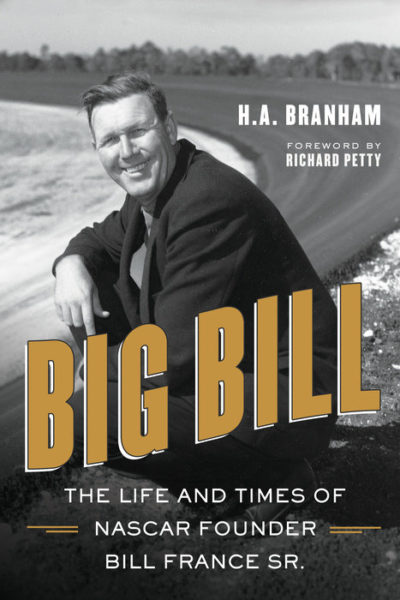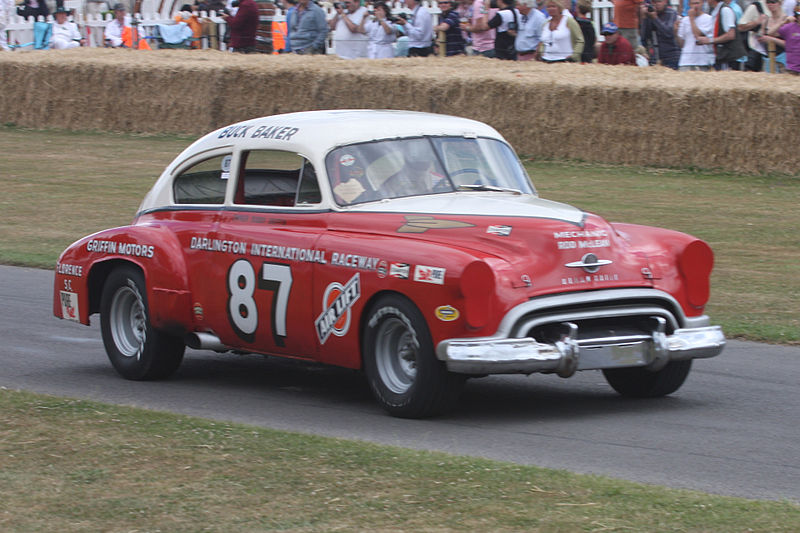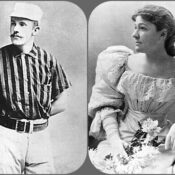Formed on December 14, 1948, the National Association for Stock Car Auto Racing took the wheel for racing in America. Less than a year later, the first official NASCAR “Strictly Stock” race got underway in Charlotte on June 19, 1949.
NASCAR has its roots in the Prohibition era, when bootleggers would run illegal liquor in cars that had been modified for speed while maintaining the appearance of regular automobiles. When Prohibition ended in 1933, the cars kept going, largely in an informal system of local races. At the same time, Daytona had become one of the centers of the speed universe, as drivers favored the future site of the Daytona Beach Road Course as a solid location for attempting to break the land-speed record. The beachfront and State Road A1A formed the two straightaways of an informal 4.1-mile track.
Bill France Sr. got involved in the Daytona scene both as a racer and as a garage owner. As drivers started to move their land-speed attempts to Bonneville Salt Flats, various public figures and business owners in Daytona tried to figure out how to keep the lucrative crowd of drivers and followers in the city. France worked with others to put on races, in addition to driving. At the outset of American involvement in World War II, a lot of the racing died down, but France stayed involved around the state.

After the war, France moved from driving to promoting and built the Occoneechee Speedway in North Carolina. He began to envision an organization that would root out unscrupulous promoters who didn’t pay drivers while codifying rules, schedules, and a championship. In December of 1947, he assembled drivers, owners, and promoters for a meeting at the Streamline Hotel in Daytona; shortly thereafter, in February of 1948, NASCAR was founded.
Plans initially called for three divisions, but the one that would take off first was the “Strictly Stock” set. The general idea of “stock-car” racing was that the cars were made of parts that were available on the regular market. You could do what you could to make your vehicle the best, but the parts had to be purchasable by the general public and drastic body modifications could not be made. Some of the cars of this era looked so “regular” that drivers occasionally drove them to the track to compete. After a slight delay to the circuit brought on by war-related parts and vehicle shortages, NASCAR was ready for its first race, a Strictly Stock event.
That went down on June 19, 1949 at the Charlotte Speedway in North Carolina. The NASCAR Strictly Stock Series inaugural race was the first race officially sanctioned by the new organization. A crowd of 13,000 turned out to watch the 200-lap, 150-mile race, which reached top speeds of nearly 68 mph. Jim Roper won after the first man to cross the finish line, Glenn Dunaway, was DQed over improperly set rear springs.
In the decades that followed, France and his successors built NASCAR into a global brand. Today, his son, Jim France, is the CEO. The body sanctions more than 1500 races around the world. Their three biggest National series are the Monster Energy NASCAR Cup Series, the Xfinity Series, and the Gander Outdoors Truck Series, of which the Monster Energy series is the major and contains what is perhaps the signature NASCAR event, the Daytona 500. The form continues to be popular across the planet, although ratings and attendance have suffered in recent years. Dave Caldwell, writing for Forbes, suggested that NASCAR may be headed toward becoming a “niche sport” again after a ‘90s/early 2000s surge of popularity. Whatever the future brings, there’s no denying NASCAR’s rich history, or the vision of drivers that just wanted to see how fast, and occasionally how far, they could go.
Featured image: A 1949 Oldsmobile Rocket of the style that ran in the inaugural “Strictly Stock” race at Charlotte Speedway (Photo by Brian Snelson; Wikimedia Commons via the Creative Commons Attribution 2.0 Generic license)
Become a Saturday Evening Post member and enjoy unlimited access. Subscribe now



